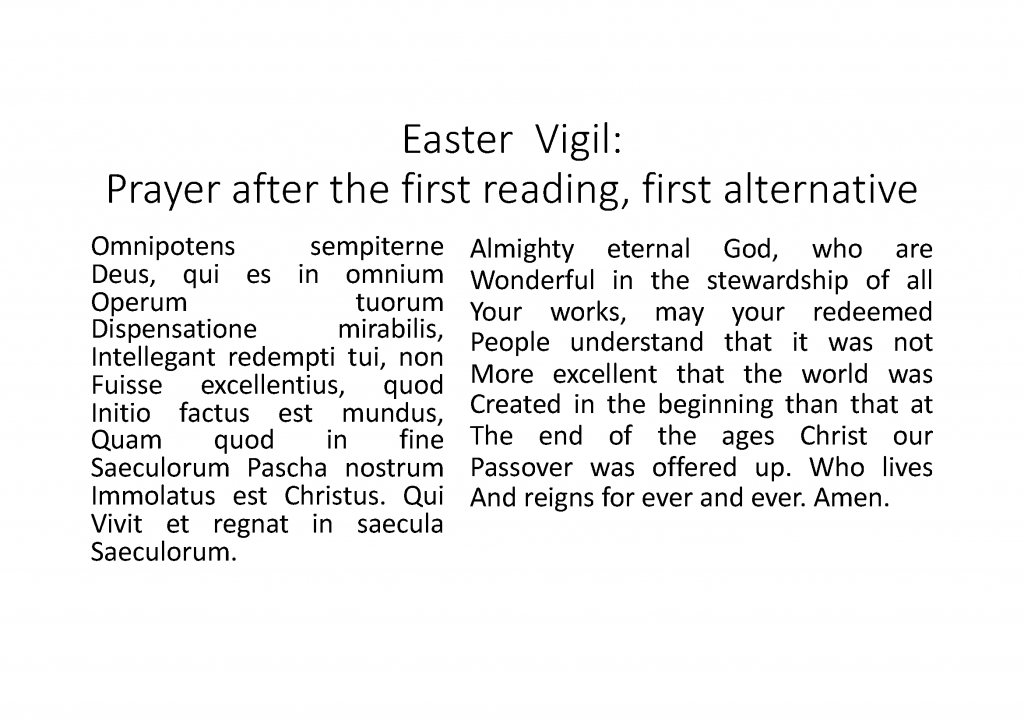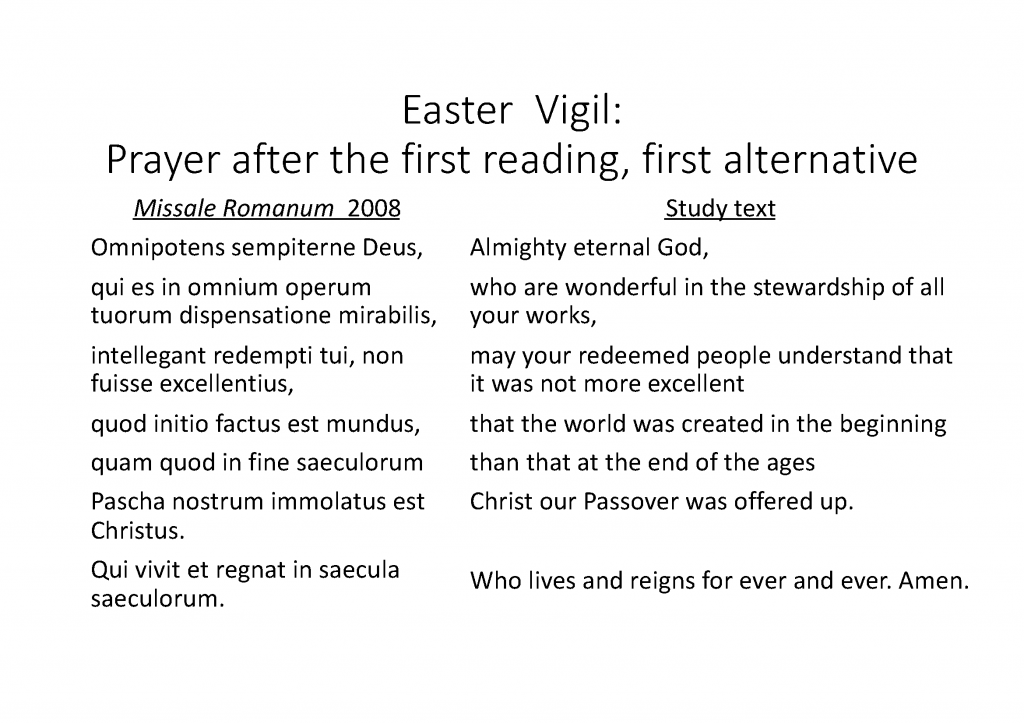Most formatting questions can be answered by reading the volume Metodologia published by the PIL.
Prayer text
Here I wish to address the formatting of prayer texts in research papers. I have at times received a prayer with its study translation formatted in the following manner.

There are several difficulties with this text.
- The line breaks of the original text are not replicated. Rather the text is presented as a paragraph of prose text.
- The text is aligned on both the right and the left sides, which results in large gaps in the text with words separated by some distance.
- The automatic capitalisation has capitalised the first word of every line, even though this is not the case in the original document.
- The individual lines of the original Latin prayer do not correspond directly across from the English rendering of each to the right.
This situation can be imporoved in the following ways.

Please note the following elements of this layout.
- The line breaks of the original text are replicated. The text is presented not as a prayer not as a paragraph of prose text.
- The text is aligned on the left side only, as in the original text, and the words are no longer separated by gaps.
- Capitalisation is rendered as in the original document; the automatic capitalisation has not been allowed to capitalise the first word of each line.
- The individual lines of the original Latin prayer correspond directly across from the English rendering of each to the right.
- Both texts have a heading indicating the source of the text.
- A footnote is needed to give the source of the Latin text.
- A footnote is n eeded to indicate who translated the study text.
This second text is easy to read and to compare with its translation.
Ellipses
When you directly quote a text, but choose to leave out one or more words, an ellipsis of three dots “…” is used to indicate the omission. The simple rule for the ellipsis is that it goes where the missing word or words are. Take the example text:
Prof. McCarthy is a monk of St. Benedict’s Abbey in Atchison, Kansas. He teaches a course on the collects. He uses the method presented by Prof. De Zan and developed by Prof. James Leachman and himself according to four interpretative keys.
We can say:
Prof. McCarthy . . . teaches a course on the collects.
Here the ellipsis indicates that words are missing. Note that I have respected the meaning of the original text, and not changed its meaning, and I have created a new sentence that also makes sense. It does no good to say:
. . . He teaches a course on the collects . . . and developed by Prof. James Leachman.
The above sentence does not make sense, nor does it respect the meaning of the original statement. Who is “He”? What does “and” join? Again, the quoted text must respect the meaning of the original text and must make sense as quoted with the ellipsis.
The use of an ellipsis becomes more challenging when there is a period involved. The rule, however, remains that the ellipsis substitutes for the missing words, and the period stays where it stays.
Prof. McCarthy is a monk of St. Benedict’s Abbey in Atchison, Kansas. . . . He uses the method presented by Prof. De Zan and developed by Prof. James Leachman and himself according to four interpretative keys.
In the above example, Kansas ends a sentence and so is immediately followed by a period. Next a full sentence is omitted, and so replaced by the ellipsis, “. . .”.
Prof. McCarthy . . . teaches a course on the collects. He uses the method presented by Prof. De Zan . . . .
In the above example, notice that the name De Zan does not end a sentence and is not followed by a period. Rather, the name De Zan is followed by the ellpisis indicating the missing words, and this is followed by a period to indicate the end of the sentence.
On many computers if you type three dots in a row . . . , the auto-correct will automatically space the dots slightly farther apart, more like this . . . , but not too far apart for good reason.
In the above statement, note that the ellipsis appears, followed by a comma which is needed for the text which follows. I can also omit several more words including the comma as follows:
. . . the auto-correct will automatically space the dots slightly farther apart, more like this . . . for good reason.
Notice that if you begin a citation mid-sentence, you can use an ellipsis at the beginning to indicte that the text begins in the midst of a sentence as in the example above.